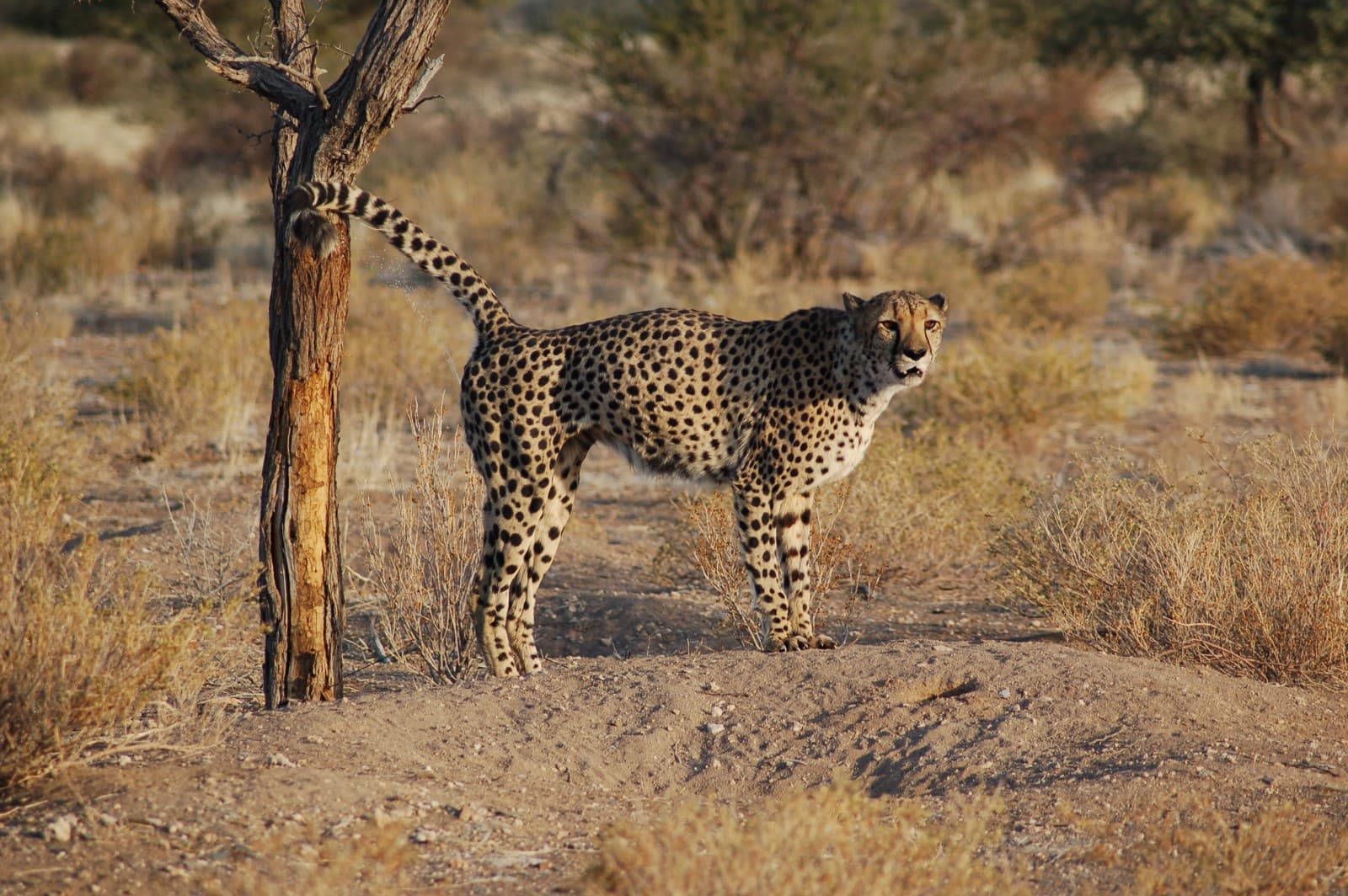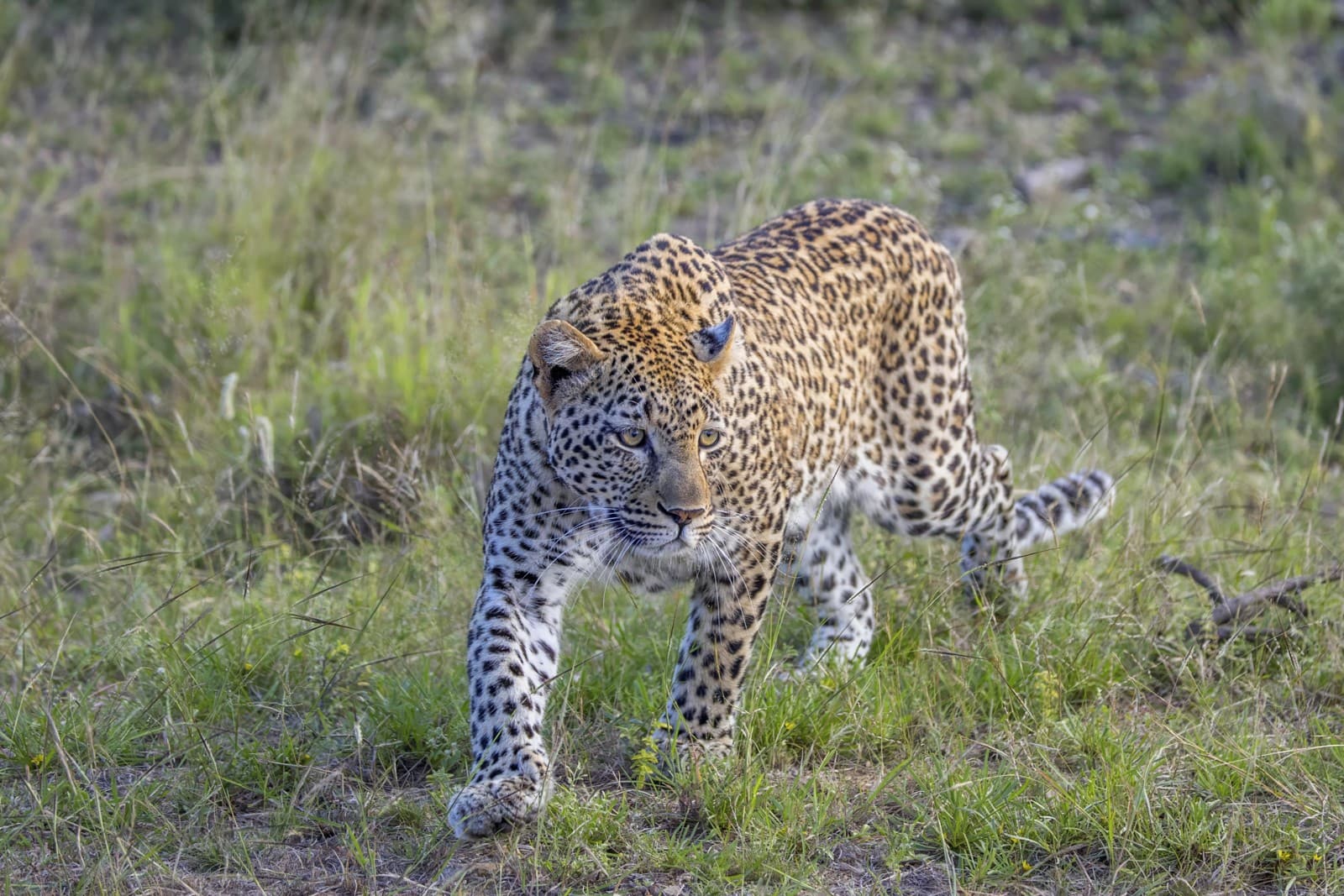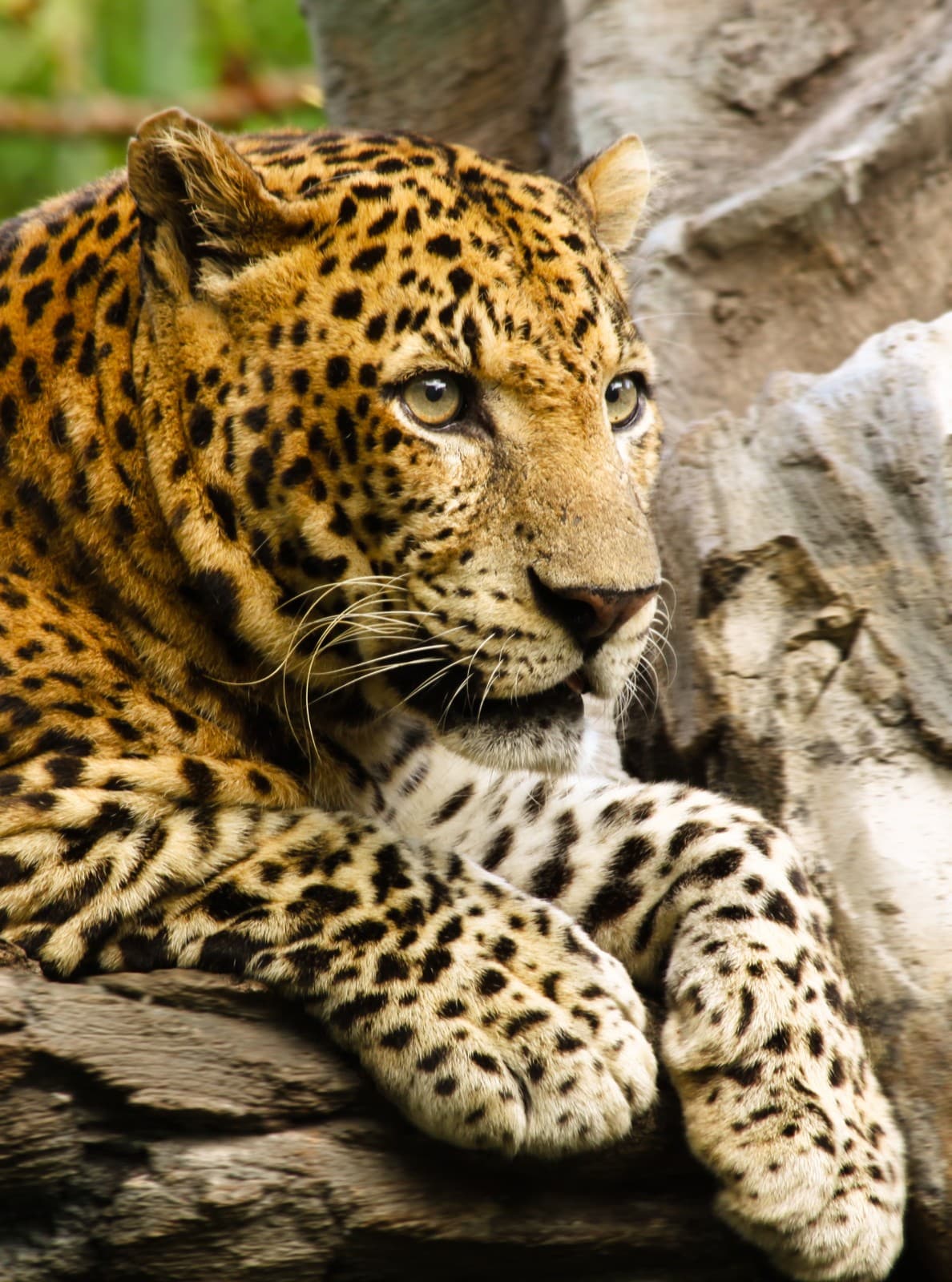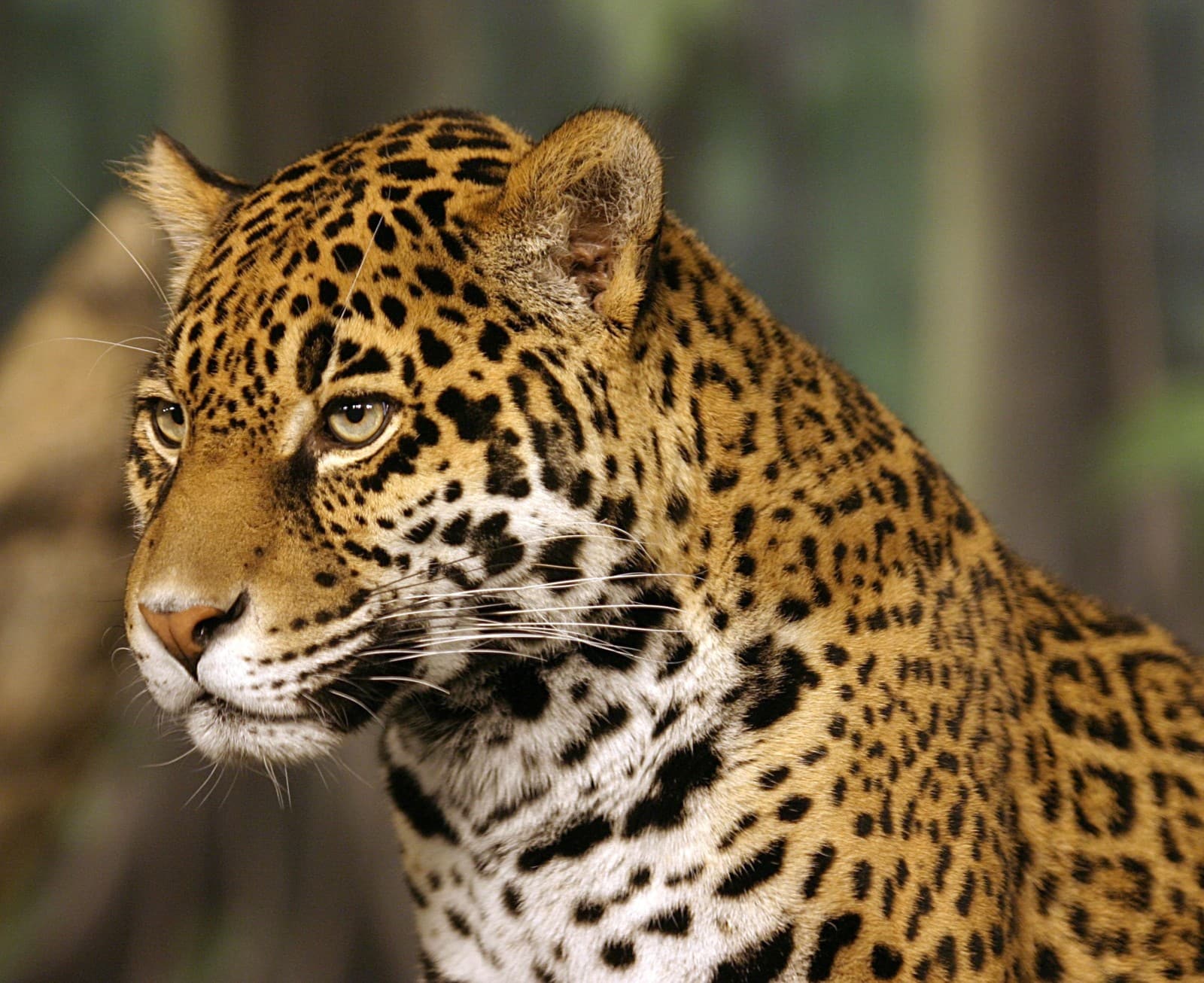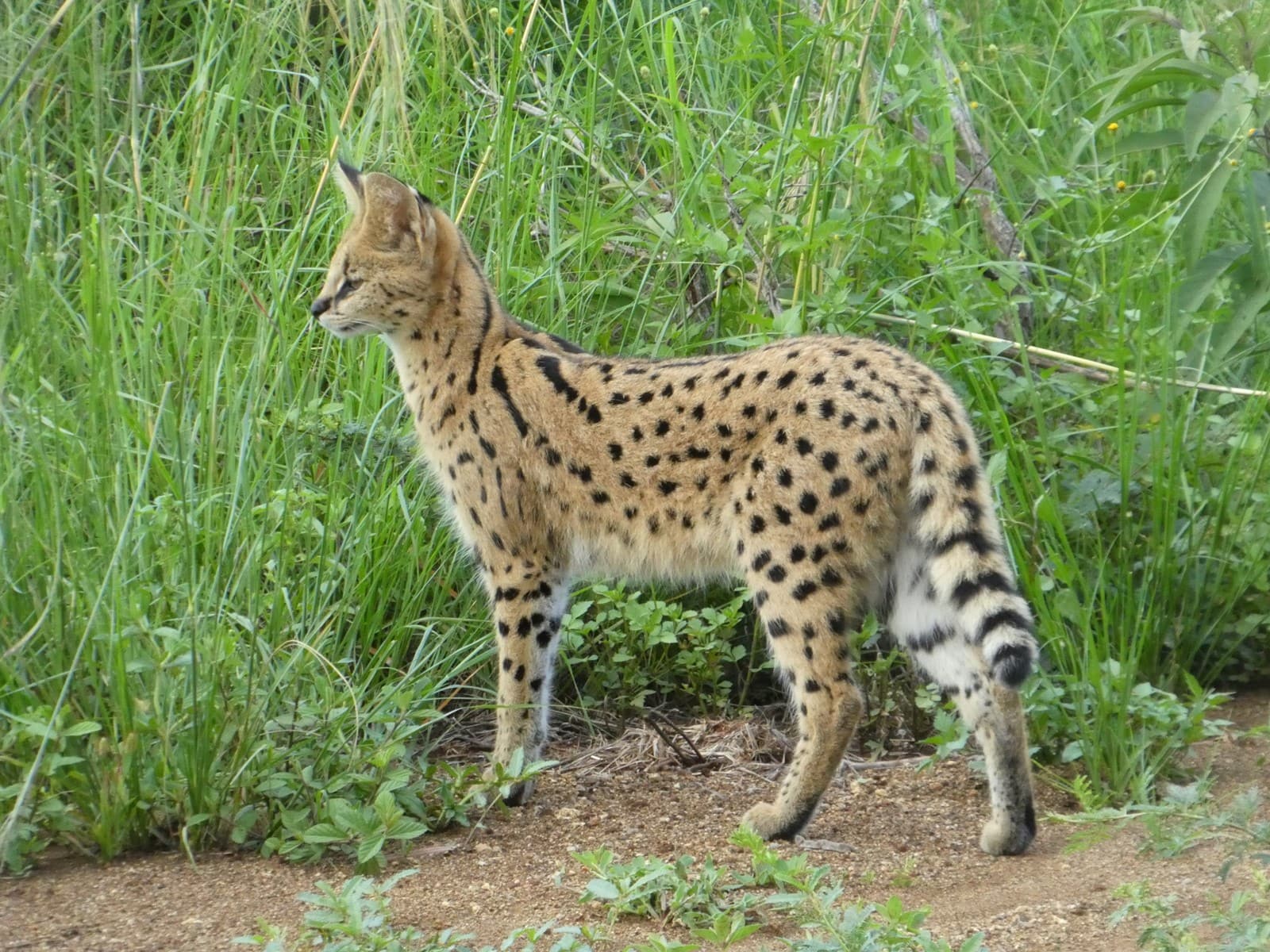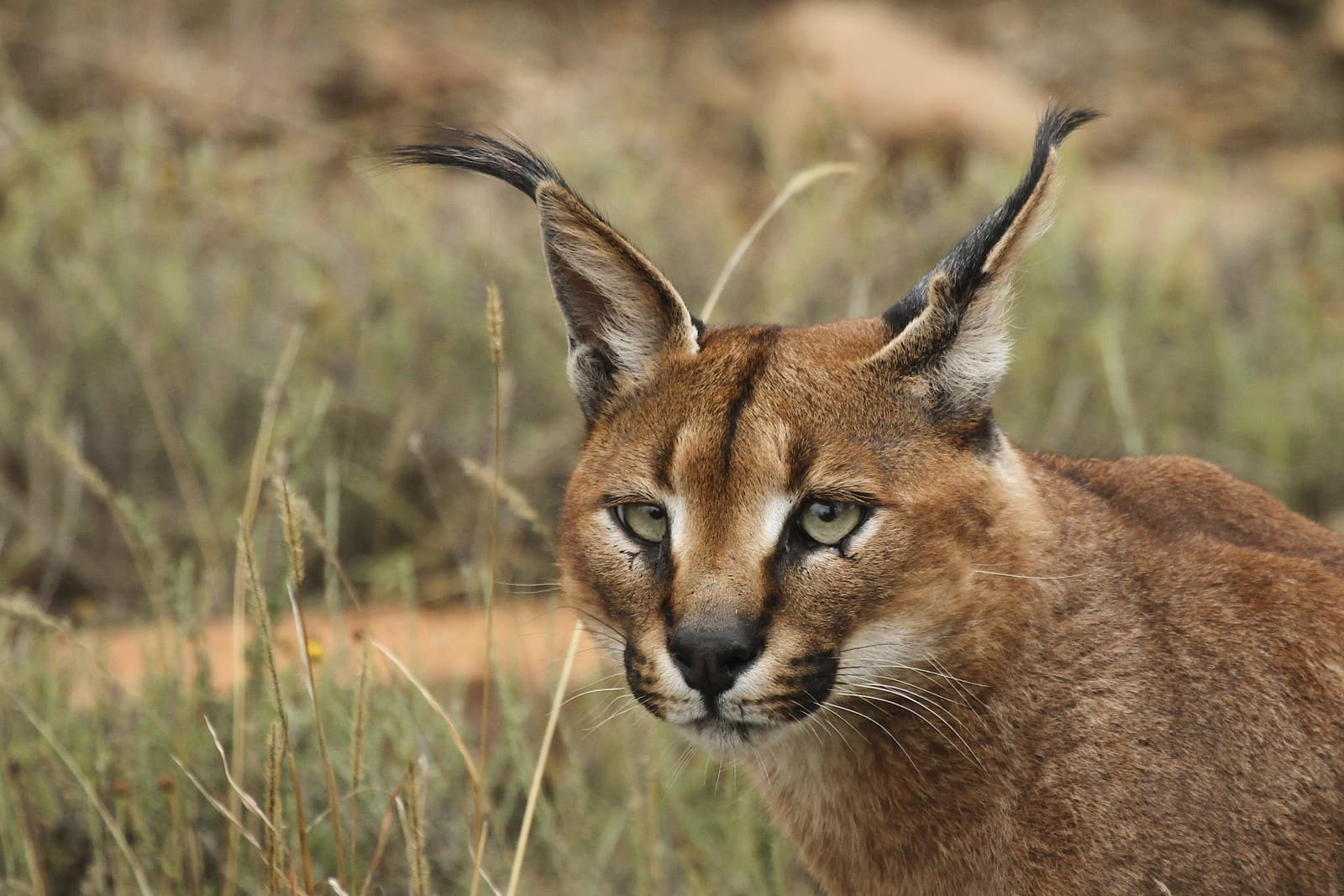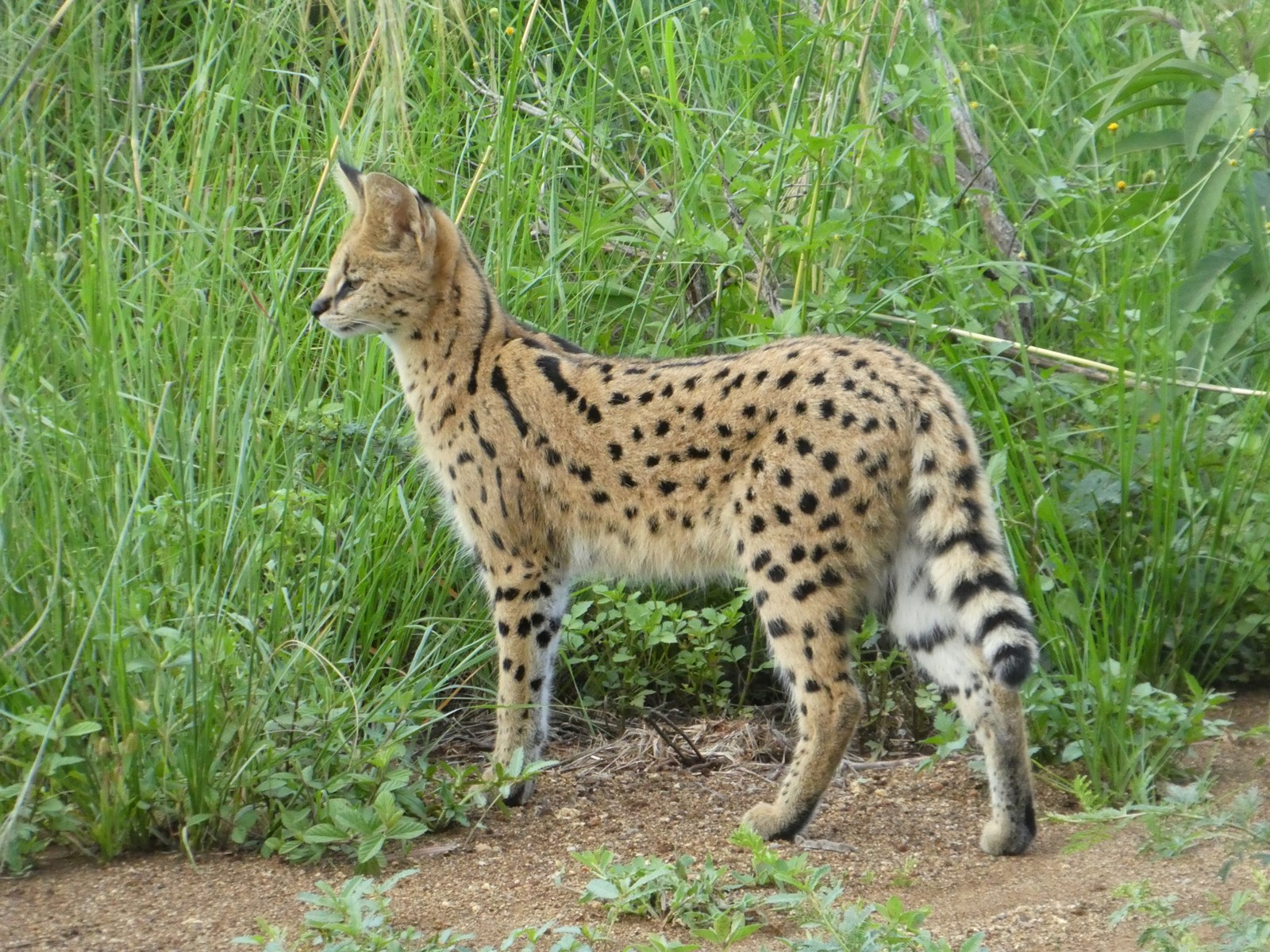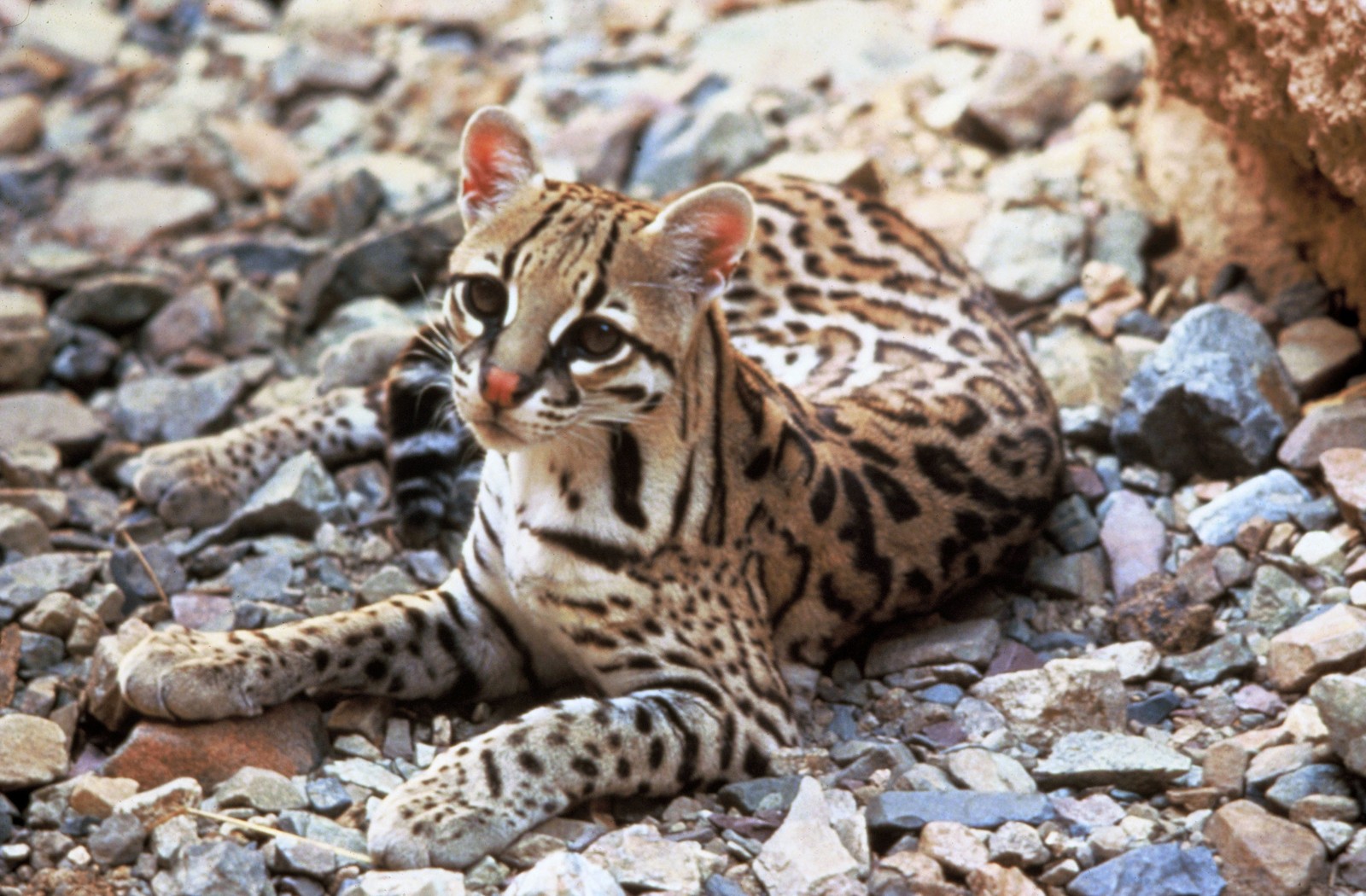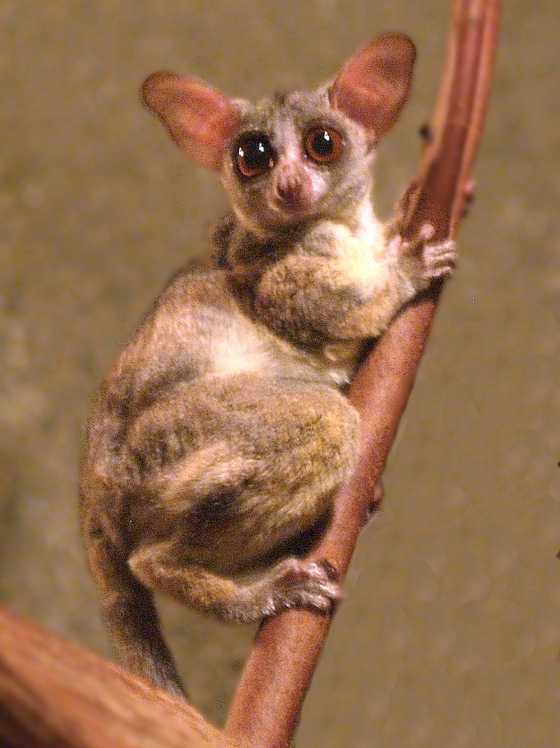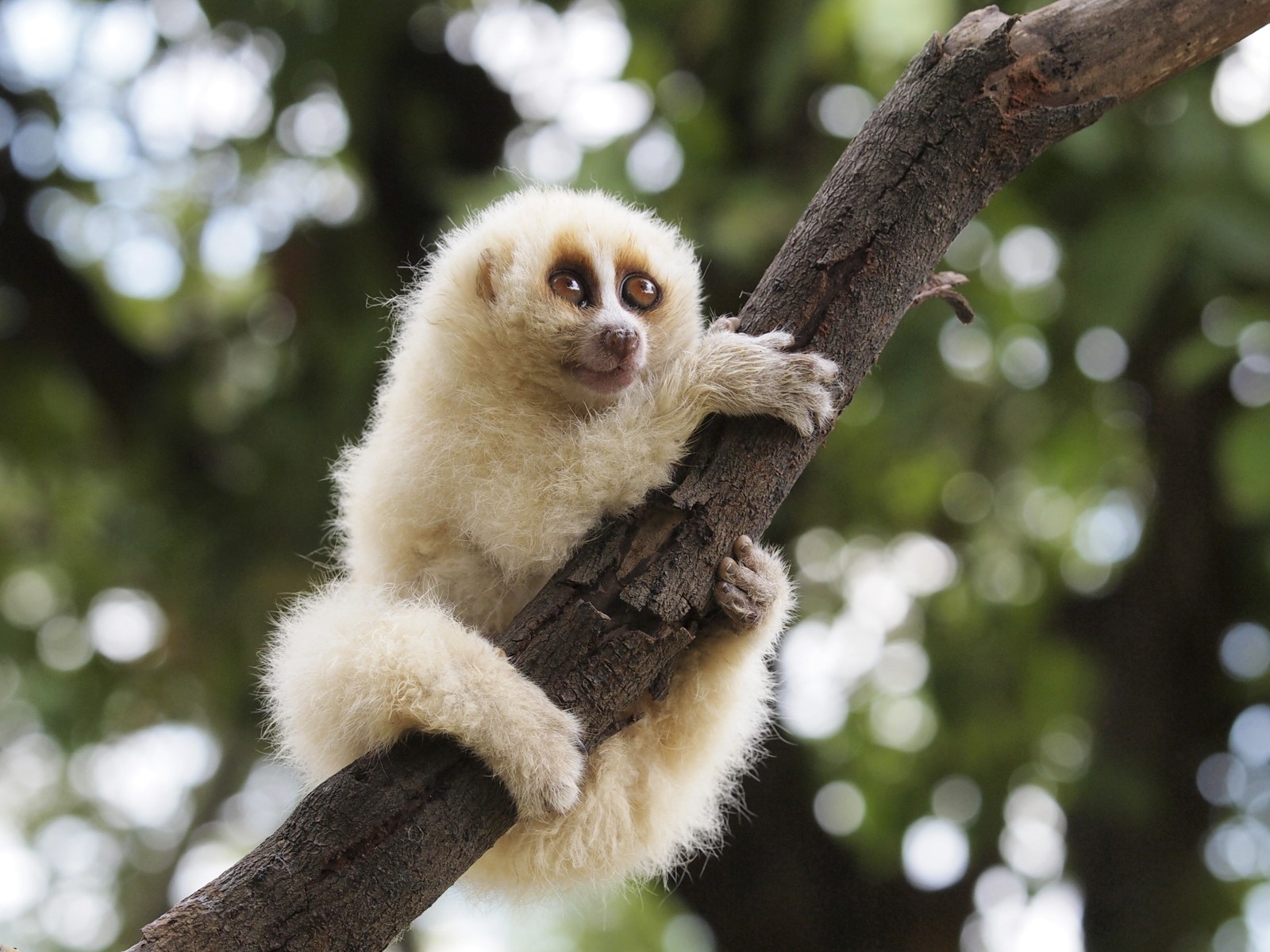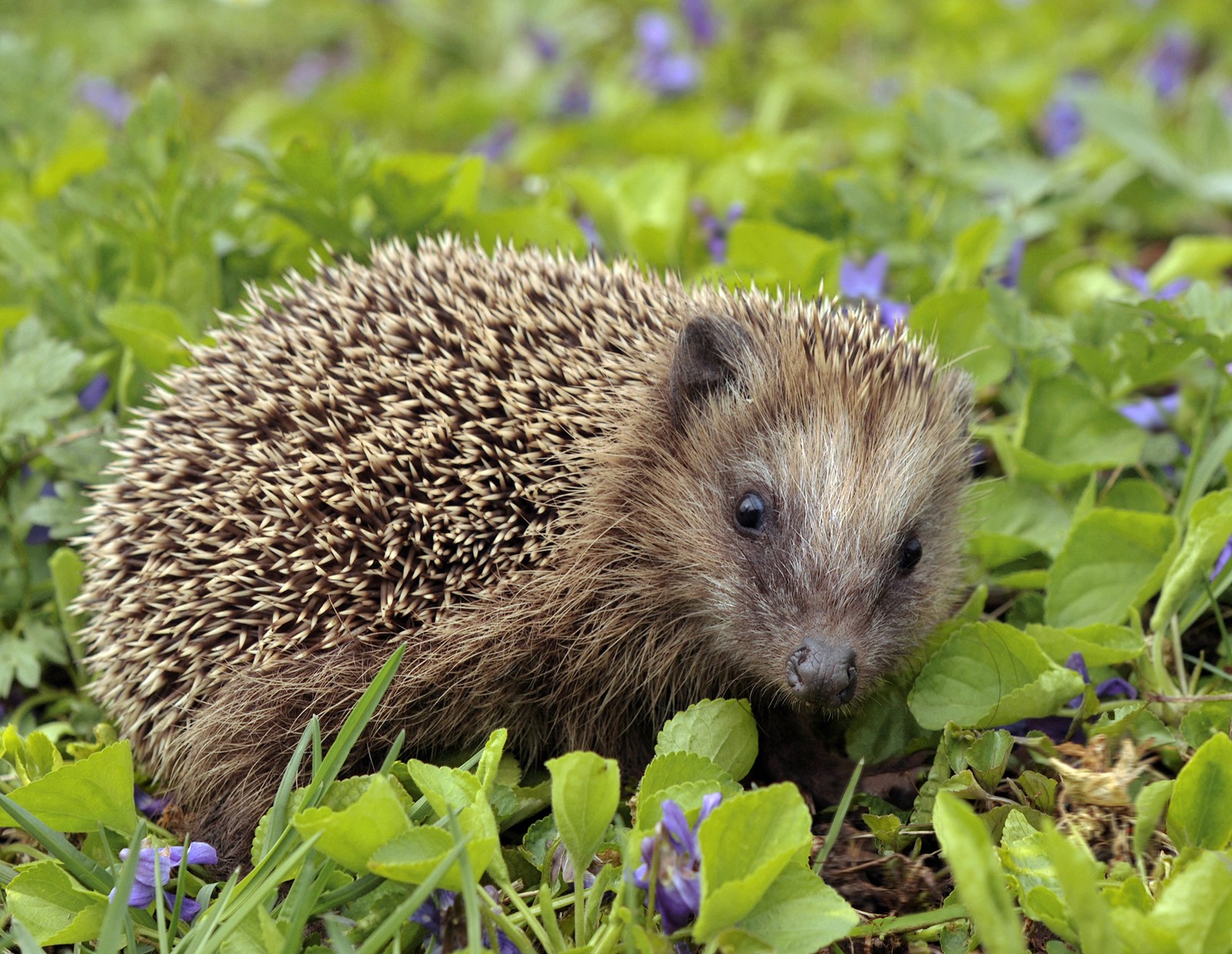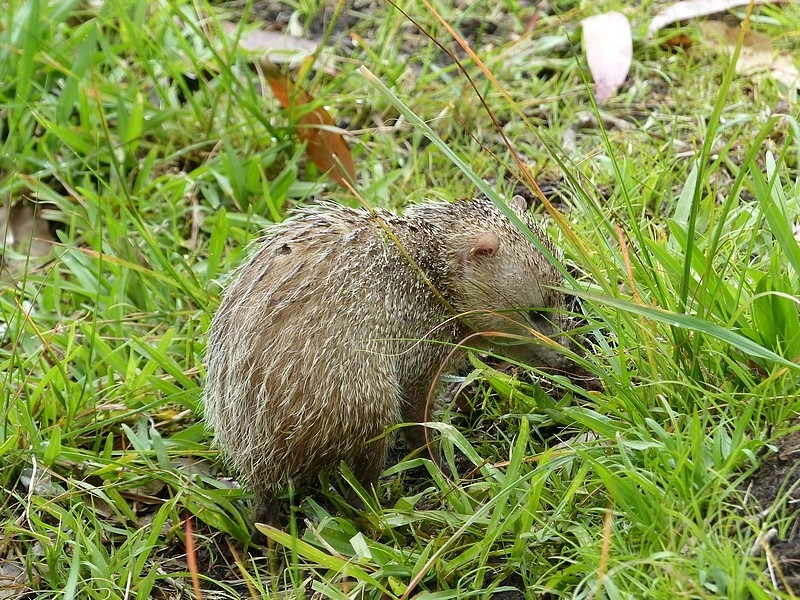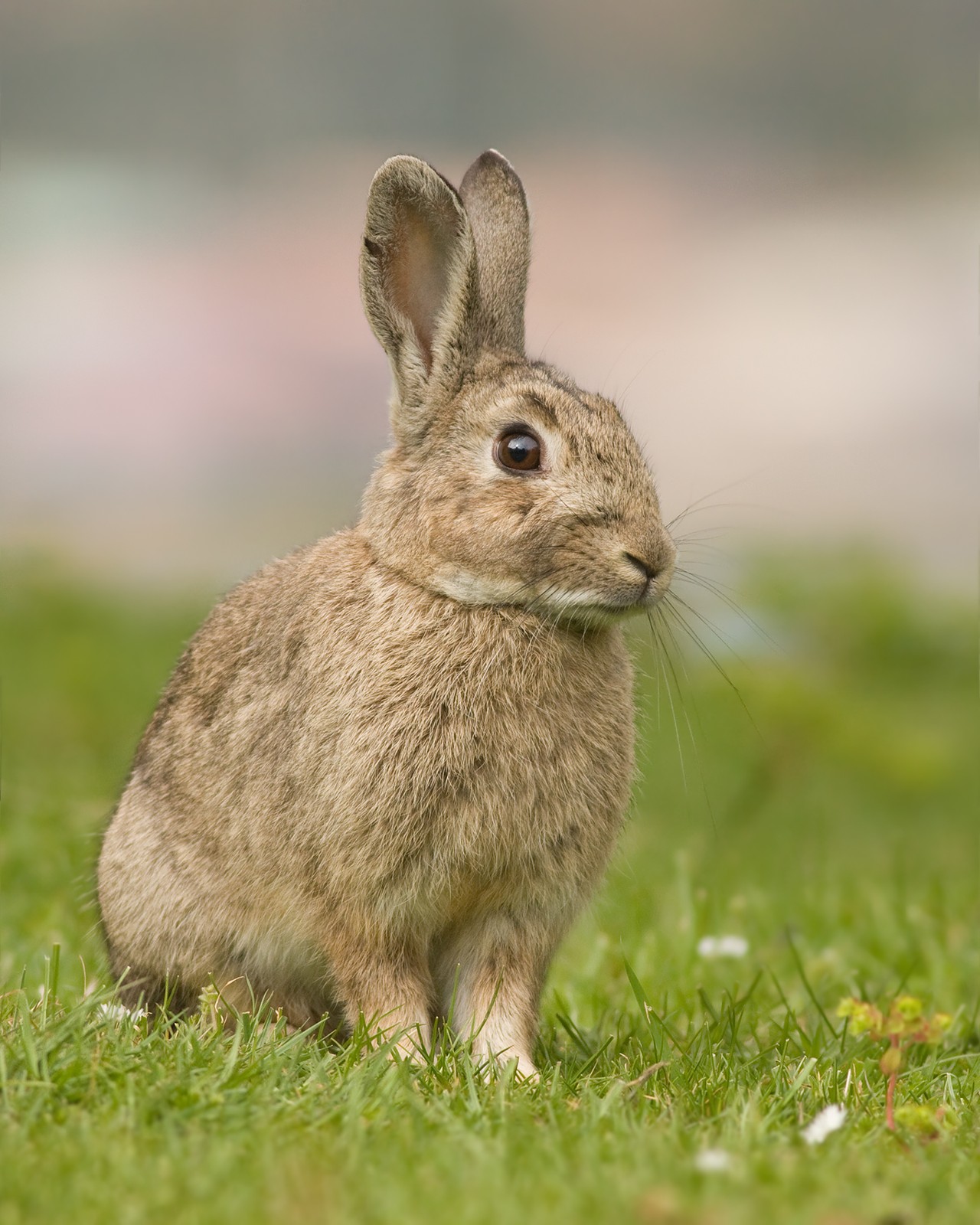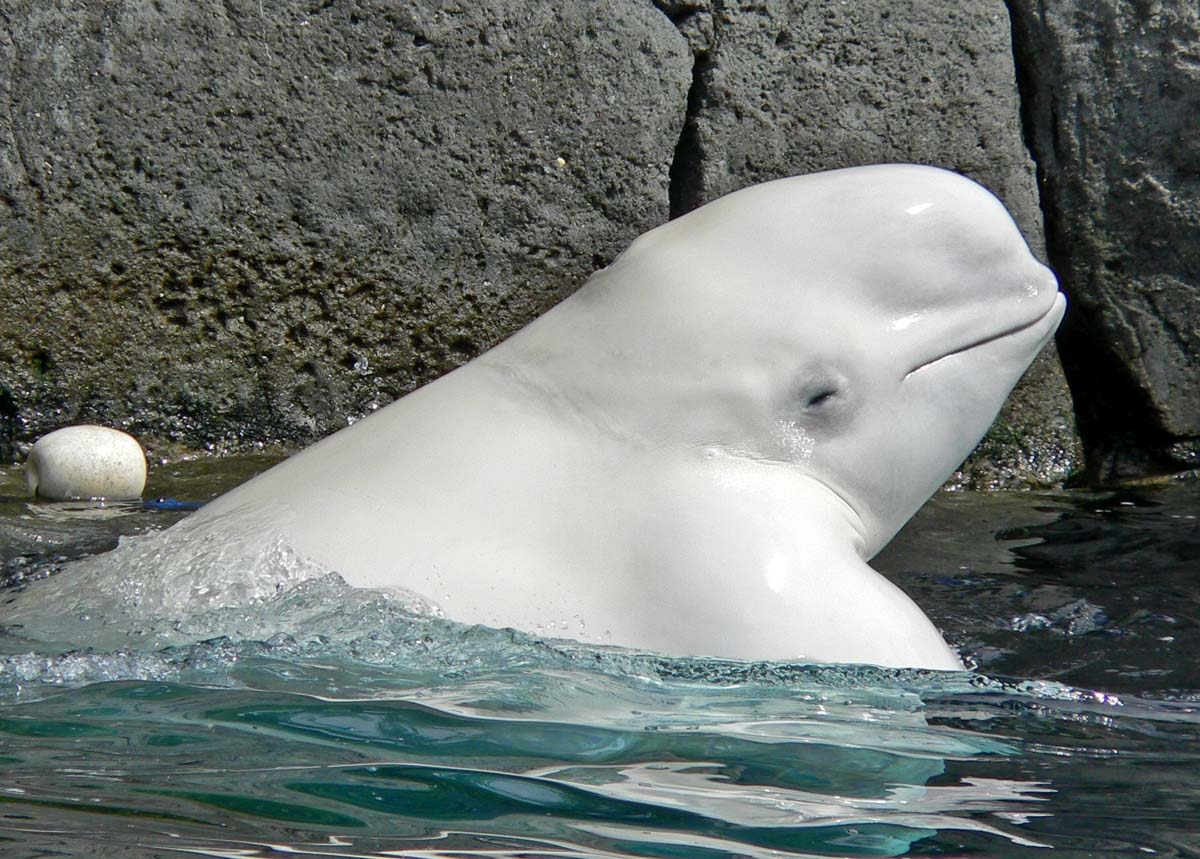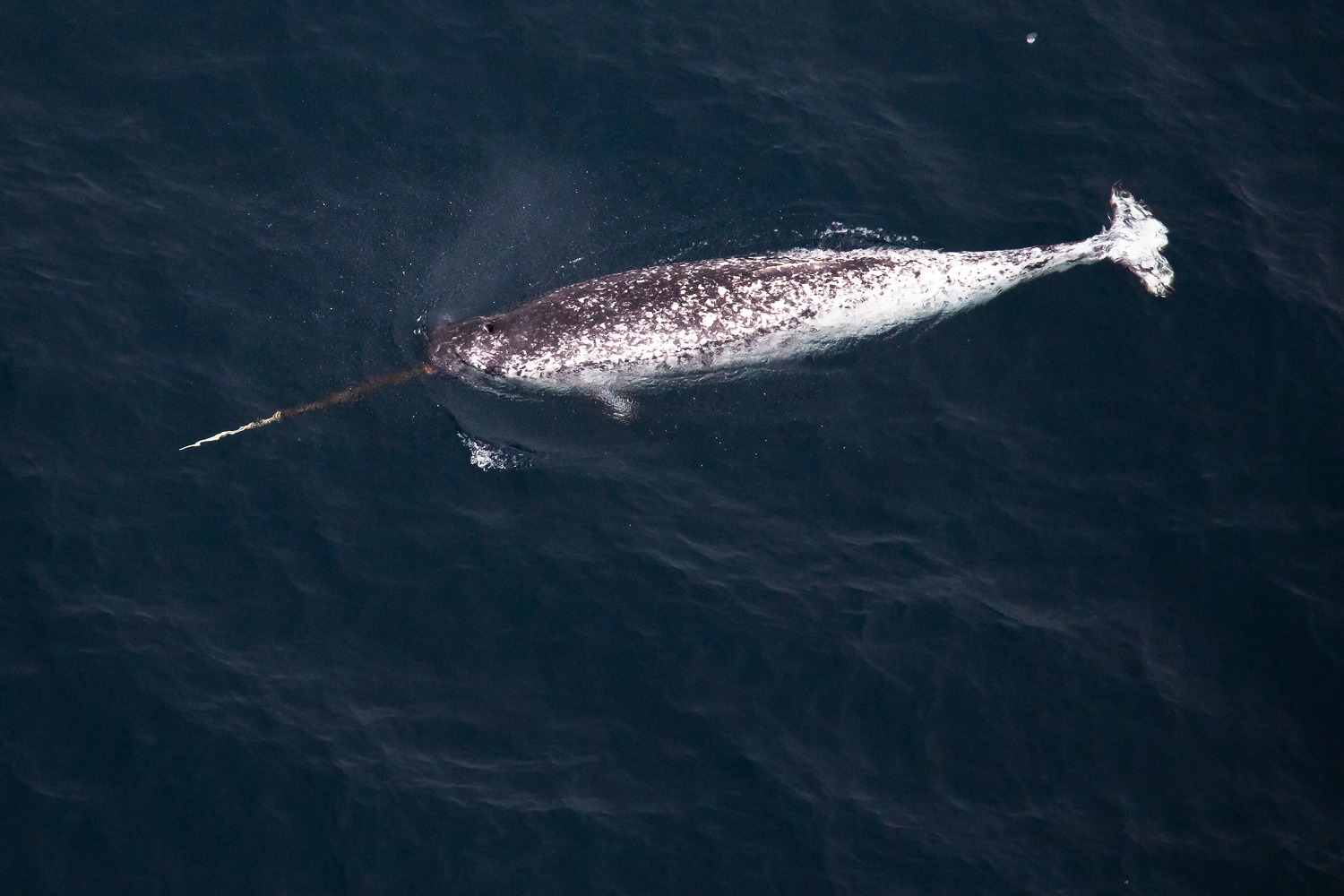Leopard vs Serval: A Complete Comparison
When comparing leopard vs serval, we’re examining two remarkably different African wild cats. The leopard (Panthera pardus) stands as Africa’s most adaptable big cat, weighing 60-198 pounds (27-90 kg), while the serval (Leptailurus serval) is a specialized grassland hunter weighing just 20-40 pounds (9-18 kg). Despite sharing spotted coat patterns, these cats occupy distinct ecological niches and showcase fascinating adaptations that set them apart.
These African felids differ dramatically in hunting strategies, preferred habitats, and physical capabilities. While leopards are powerful generalist predators capable of taking down prey larger than themselves, servals are specialized hunters that excel at catching smaller prey like rodents and birds in tall grasslands.
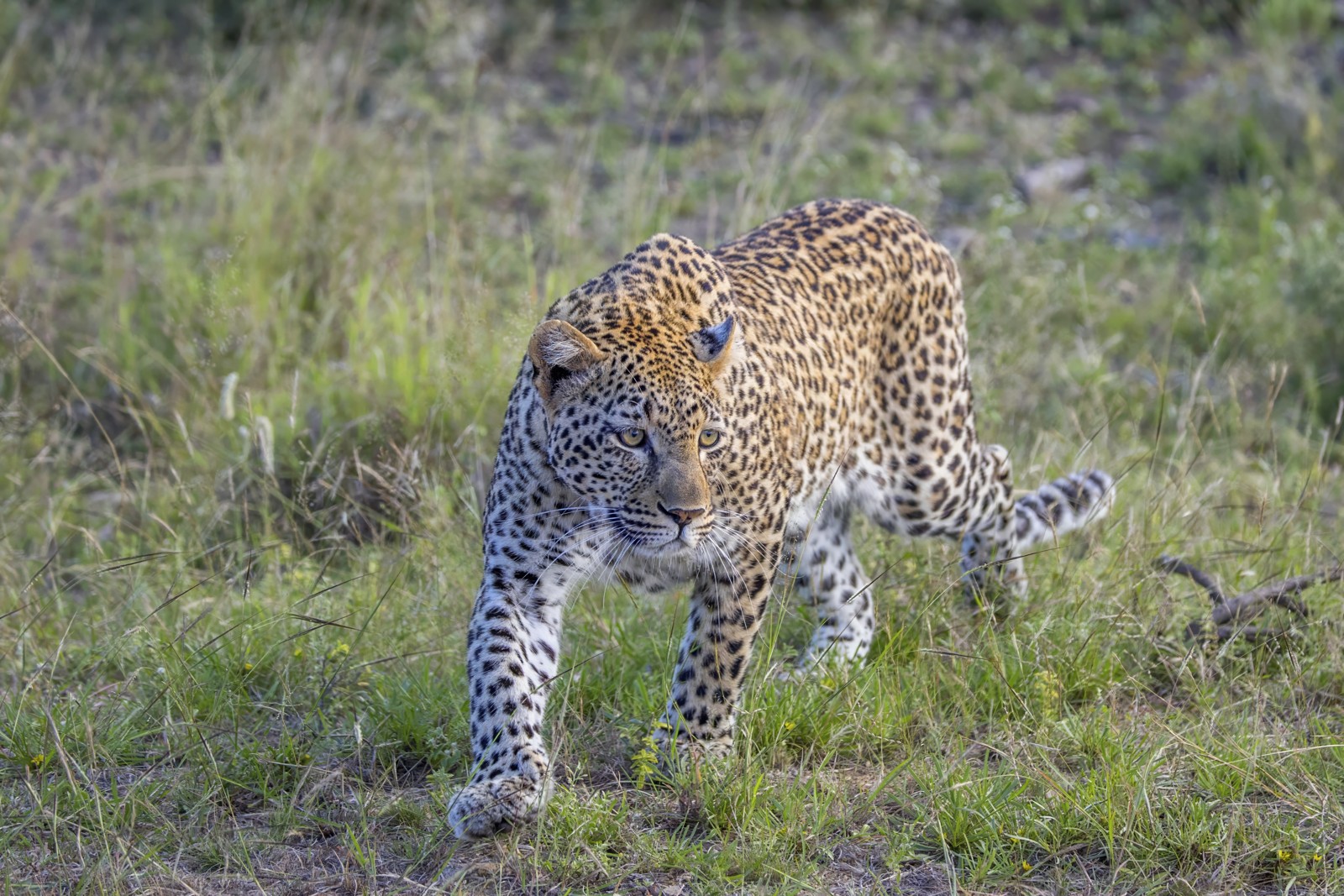
© Charles J. Sharp / CC BY-SA 4.0
The leopard’s muscular build and distinctive rosette pattern exemplify the power and stealth that make it one of Africa’s most successful predators. These adaptations allow it to hunt effectively across diverse habitats, from dense forests to open savannas.
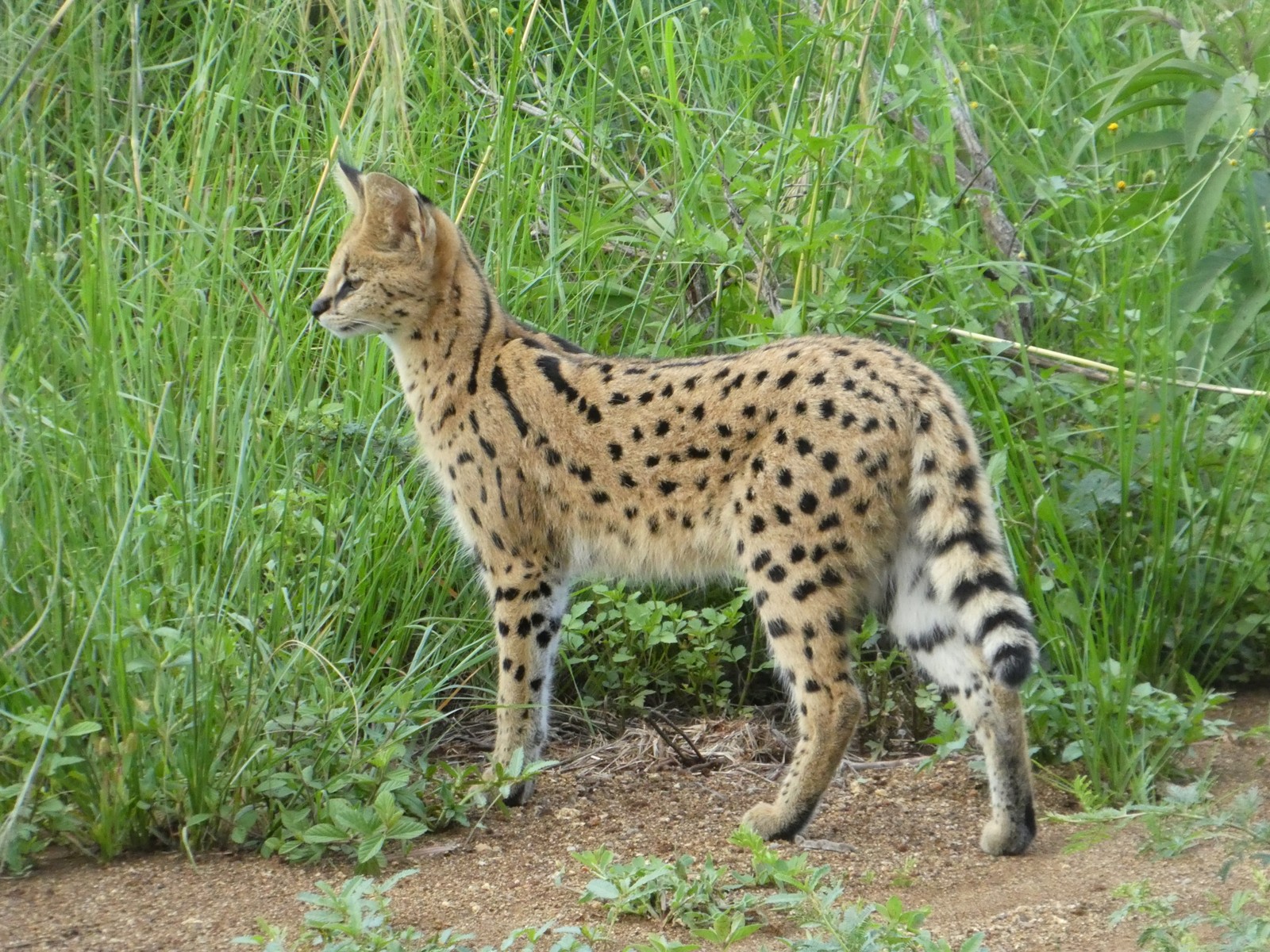
© datadan / CC BY 4.0
The serval’s distinctive long legs and large ears showcase its specialized adaptations for hunting in tall grasslands. These unique features enable precise prey location and impressive leaping abilities, making it Africa’s most successful small-cat hunter.
Key Differences: Leopard vs Serval
| Feature | Leopard | Serval |
|---|---|---|
| Size | Length: 6-6.5 ft (1.8-2 m) | Length: 2.5-3.9 ft (0.7-1.2 m) |
| Weight | 60-198 lbs (27-90 kg) | 20-40 lbs (9-18 kg) |
| Habitat | Forests, savannas, mountains | Grasslands, wetlands |
| Hunting Success | 38% success rate | Up to 50% success rate |
| Prey Size | Up to 550 lbs (250 kg) | Usually under 4.4 lbs (2 kg) |
| Vertical Jump | Up to 10 ft (3 m) | Up to 13 ft (4 m) |
Hunting Strategies and Prey Selection
Leopards and servals exhibit markedly different hunting approaches. Leopards rely on ambush tactics, using their powerful build to take down medium to large prey like antelope and drag carcasses into trees. Their strength allows them to carry prey weighing up to twice their body weight into trees, protecting it from other predators.
Servals, conversely, are specialized small-prey hunters. Their extraordinarily long legs and large ears help them detect and capture rodents and birds in tall grass. They can leap up to 13 feet (4 meters) high to catch birds in flight, demonstrating the highest hunting success rate among wild cats at nearly 50%.
Habitat and Distribution
While both species inhabit Africa, their preferred territories differ significantly. Leopards show remarkable adaptability, thriving in diverse environments from rainforests to semi-deserts. They occur across sub-Saharan Africa and historically ranged into parts of Asia and the Middle East.
Servals display more specific habitat requirements, preferring wet savannas and grasslands near water sources. They’re particularly abundant in areas with tall grass and good rodent populations, showing a strong preference for areas with adequate cover and abundant small prey.
Physical Adaptations
The physical differences between leopards and servals reflect their distinct hunting strategies:
-
Leopards feature:
- Muscular build for power
- Broad paws for climbing
- Rosette-patterned coat for camouflage
- Strong jaw muscles for carrying heavy prey
-
Servals possess:
- Longest legs relative to body size of any cat
- Oversized ears for detecting prey movement
- Simple spotted pattern for grassland camouflage
- Specialized paws for reaching into burrows
Who Would Win in a Confrontation?
While direct confrontations between leopards and servals are rare in nature, the significant size difference makes the outcome predictable. A leopard, being 3-5 times heavier and equipped with more powerful hunting adaptations, would dominate any encounter. However, servals typically avoid areas where larger predators are active, reducing the likelihood of such conflicts.
Conservation Status and Threats
Both species face similar conservation challenges, primarily habitat loss and human conflict. Leopards are classified as Vulnerable on the IUCN Red List, with populations declining across their range. Servals, while more stable, face increasing pressure from grassland conversion to agriculture and wetland destruction.
Understanding the distinct characteristics and ecological roles of these fascinating cats helps highlight the importance of preserving diverse habitats to ensure their survival. While they may share spotted coats, the leopard and serval represent remarkably different evolutionary solutions to the challenge of survival in Africa’s varied landscapes.
